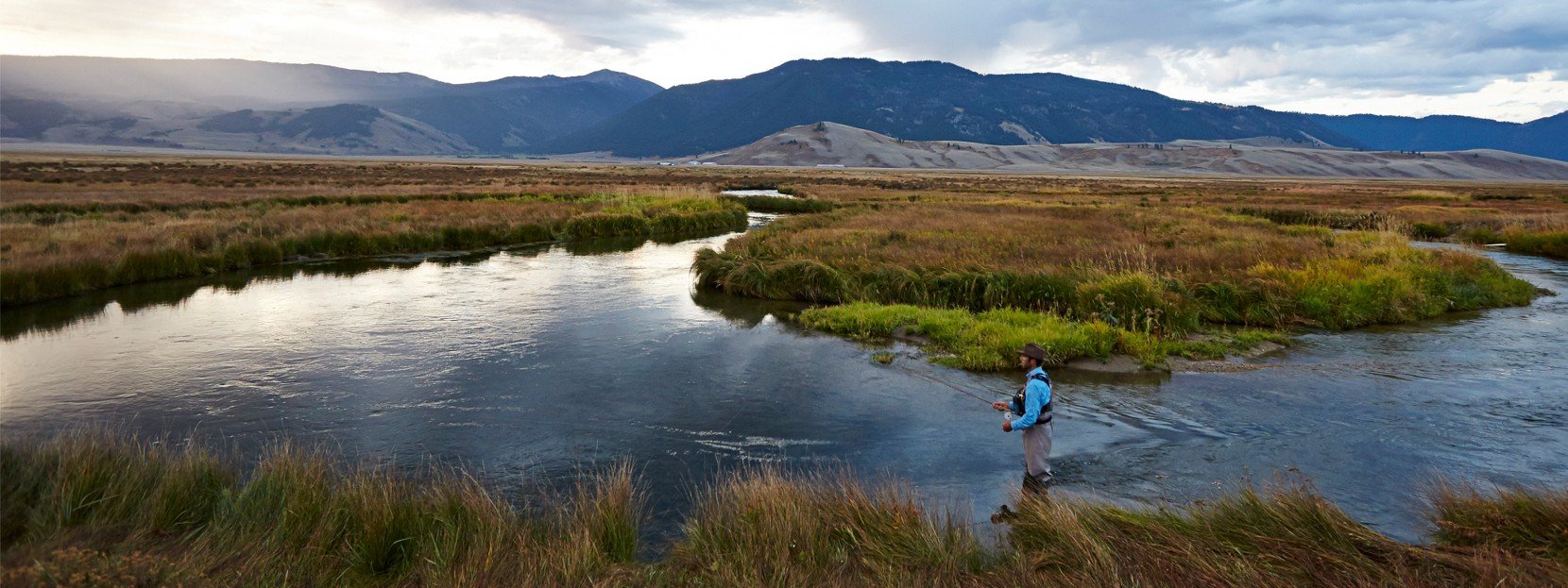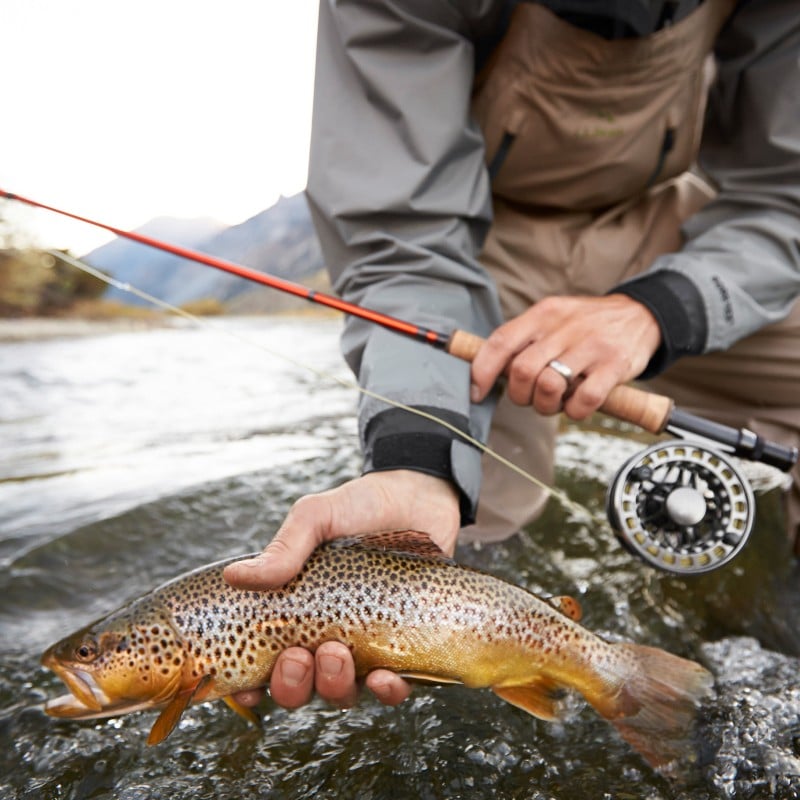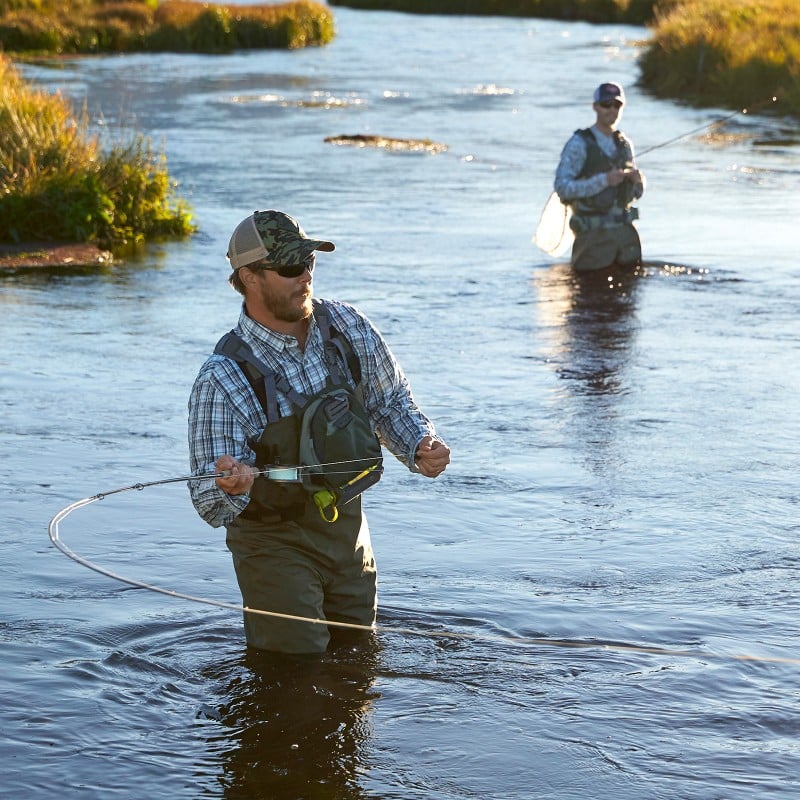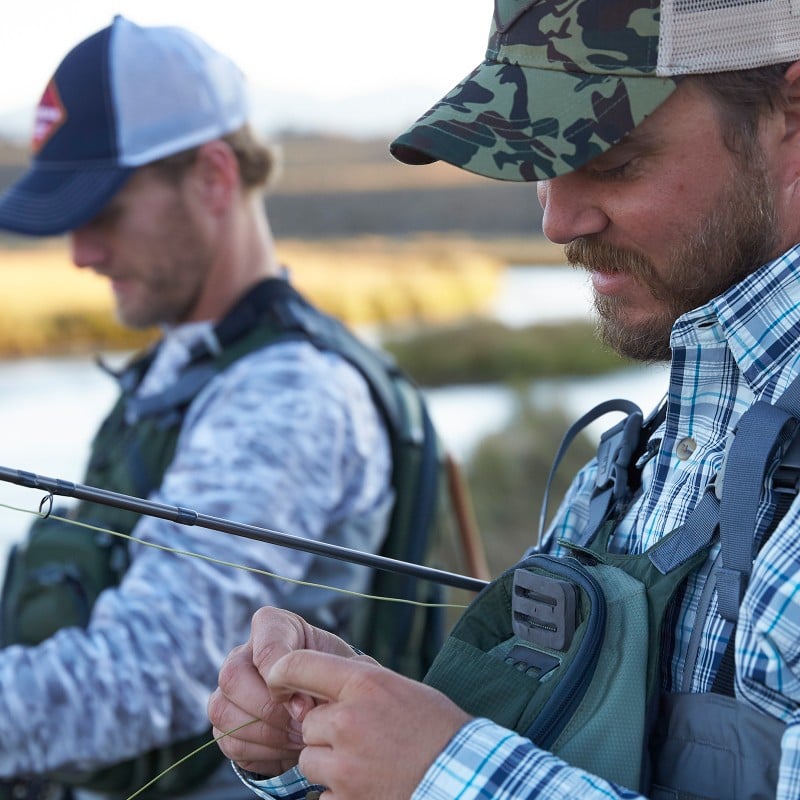
1. Fly Rod Weights - Simpler Than You Think
Simply put, the “weight” of a fly rod corresponds to the weight of the fly line it’s designed to cast. For example, a 5 weight fly rod is built to cast a 5 weight line. The higher the number the heavier and more powerful the rod is. While fly rod weights start as light as 1 and go all the way up to 15, the most commonly used weights fall between 3 and 9.
| ROD WEIGHT | WATER / CONDITIONS | FISH SPECIES |
|---|---|---|
| 1 to 3 | Superlight, supple rods designed for small streams | Trout, panfish |
| 4 | Designed for small water or smaller flies | Trout, panfish |
| 5 | A versatile trout rod for streams, rivers, lakes and ponds | Trout, panfish, small bass |
| 6 | Most versatile rod weight, casts small to large flies | Trout, panfish, bass |
| 7 | Great for larger water and light saltwater applications | Bass, large trout, small saltwater |
| 8 to 10 | Large water and saltwater; big fish and big flies | Bass, steelhead, pike, striped bass, bonefish |
| 11 to 12 | Heavy rods with the power to fight big saltwater fish | Tarpon, Giant Trevally |
| 13 and up | True specialty rods for offshore saltwater fish | Billfish, Tuna |


2. What Kind of Water Do You Want to Fish?
The type of water you like to fish will help determine the weight and length fly rod you choose.
SMALL WATER
These are small rivers, creeks and ponds. Space can be tight with overhanging trees and other obstacles and it’s not usually necessary to make long casts. Targeted fish species include trout, panfish and small bass. 3 to 5 weight fly rods in lengths 6’6” to 8’6” would be the ideal choice for this kind of water.
MEDIUM WATER
Larger rivers, lakes and ponds, including fishing from a boat. Generally, there is ample room for casting and longer casts may be necessary. Here you’re looking at larger trout, panfish and larger bass. You’ll want a 5 to 6 weight rod in lengths of 8’ to 9’. These rods open up the possibility of casting larger, heavier flies and sinking fly lines.
LARGE WATER
Big rivers, large lakes and saltwater estuaries from shore or boat. Open space gives you plenty of room for casting, but wind can be a factor, requiring heavier, more powerful rods. The fish can be quite large and include large bass, trout, salmon, pike, striped bass, redfish, snook, baby tarpon and sea trout to name a few. 9’ fly rods in 6 to 8 weight will do the job nicely.
SALT WATER
This includes fishing the open ocean surf, large estuaries and bays, tropical flats and offshore areas. Big water, big fish, constant wind and bigger flies require powerful fly rods. You could be going after hard-charging bluefish, striped bass, bonefish, bonito, false albacore, redfish, snook, barracuda, tarpon and other tough saltwater species. 8 to 10 weight rods 9’ long are most common but tarpon and other large species require 11 and 12 weight rods.

Our specially designed money-saving combos are equipped with everything to get you out on the water. They include a fly rod, reel, floating fly line, backing and a leader. The line, backing and leader come installed on the reel so all you have to do is tie on a fly and hit the water.


3. Get Familiar with the Different Kinds of Flies
Flies can imitate just about anything a fish will eat. These include hatching winged insects, baitfish, subsurface insects, terrestrial insects like grasshoppers and beetles, leeches and even saltwater crustaceans like crabs and shrimp.
DRIES
These imitate aquatic insects such as mayflies, caddis and stoneflies as they hatch onto the surface of a river or pond. Also includes grasshoppers, beetles and ants that get blown onto the water in late summer.
NYMPHS
These represent the larval and pupal forms of aquatic insects before they break out onto the surface of the water. They are particularly effective for trout, who spend about 80% of their time feeding below the surface.
STREAMERS
Lifelike baitfish imitations, streamers come in all sizes and shapes and are an effective method for most fish. They are also a good impression of the ever-present leech.
WET FLIES
These are probably the oldest types of flies and fall somewhere between a nymph and a streamer. Swinging a wet fly can be very effective for trout when no obvious feeding activity is visible.
SALTWATER
The most diverse type of flies, these can resemble everything from small to large baitfish, crabs, shrimp and worms. They are used for an amazing variety of gamefish, from 1 pound striped bass to 150 pound tarpon.
FLY SECTIONS
Money-saving collections of the most popular styles, including dries, nymphs, streamers and saltwater.
4. Stay Dry and Comfortable with Waders and Water Shoes
If you plan to fish in cooler conditions, you’ll need a good pair of waders to stay warm, dry and comfortable. There are two types of waders to consider:
STOCKINGFOOT
This type of wader features a neoprene “stocking” that keeps your feet warm and dry. They require you to purchase a separate pair of wading boots that provide support and traction. They’re best for situations where a lot of walking and hiking is required because you can usually get a good fit with wading boots. Stockingfoot waders also pack down much smaller than bootfoot waders, making them ideal for travel.
WET WADING
When the water and weather are warm, you might not have a need for waders but you still need to protect your feet from stones, sticks, shells and gravel. We offer a full selection of sandals and water shoes that are great for wearing in and out of the water.
BOOTFOOT
These feature a built-in boot that’s part of the wader. They’re not available in as many sizes as wading boots, so getting the perfect fit is more difficult. Bootfoot waders are better for cold conditions because you can usually wear thicker or more than one pair of warm socks. Finally, they’re a favorite for saltwater beach fishermen because there is no place for sand to collect inside the boot and there’s no hardware for saltwater to corrode.


